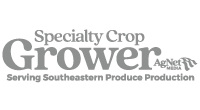By Clint Thompson
The cost of doing business remains a huge concern for Alabama’s specialty crop farmers heading into the 2025 season. Input prices remain inflated, while market prices remain mostly deflated.

Wendiam Sawadgo, Auburn assistant professor and Extension economist, explains how the math is not adding up for fruit and vegetable producers to remain sustainable.
“Inflation has come down some. Just looking at the consumer level, it was above 9% in 2022, and it’s come down to about 2.7% as of November, but that’s still above that target of 2%. Going back to the late 2010s, we were accustomed to prices rising by 1%, maybe 2% each year. Having those huge jumps of 10% year over year for about two years straight just really increased those production costs,” Sawadgo said. “The last two years we’ve seen production costs be pretty stable, actually come down a little bit, but it’s all those high prices from two years ago that have really affected things overall.
“Over the past two years, prices paid for inputs have gone up about 0.7%, whereas prices received have gone down by 10%. Both the high prices on the input side and the low prices on the output side have been a major challenge.”
Sawadgo said he has studied peanut production and explained how the economics have affected that particular row crop.
“If you look back to 2020, peanut costs per acre were roughly $1,000 per acre nationwide, and then in 2023 it jumped all the way up to $1,223. It’s come down maybe $30 in the past year, but that’s still almost $180 per acre higher than it was just three years before that,” he added.









